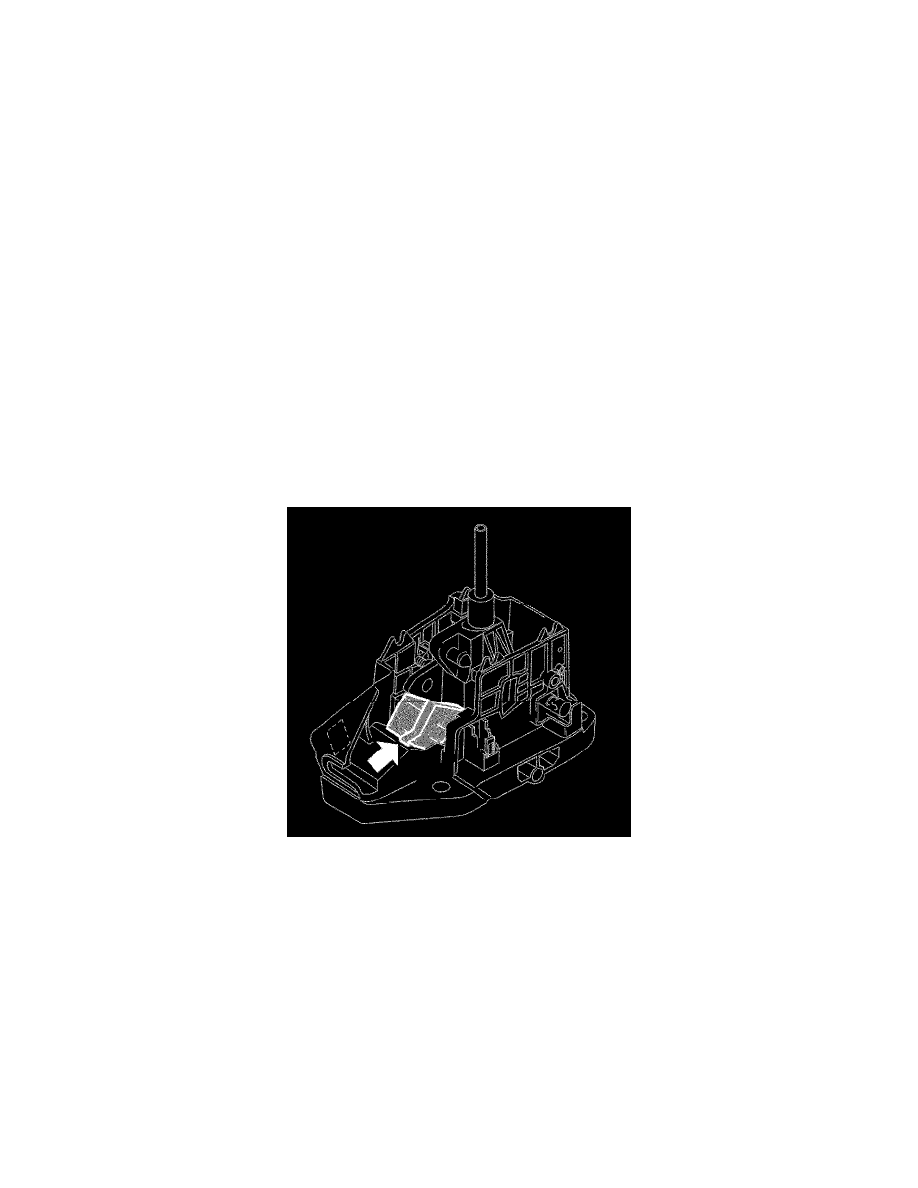V70 2.4 L5-2.4L VIN 61 B5244S (2001)

Shifting using Geartronic
When the gear selector is moved to the Geartronic position (MAN) the automatic transmission remains in hydraulic position D, but when the gear
selector is moved upwards (+) the gear selector module (GSM) transmits a signal to the transmission control module (TCM) to shift up. When the
gear selector is moved downwards (-) a signal is transmitted to the transmission control module (TCM) to shift down. The driver information module
(DIM) switches the symbol in the combined instrument panel from D to the current gear, for example 3, when the gear selector is in the MAN
position. A signal is sent to the gear selector module (GSM) to light the M LED and switches off the other LEDs. The transmission control module
(TCM) determines if shifting can be carried out and the driver information module (DIM) indicates the current gear. If shifting is permitted the
solenoids are activated according to each specific gear pattern.
However, in certain situations the transmission control module (TCM) assumes the shifting decision. The following applies:
-
When stationary only 1st, 2nd and 3rd gears can be selected. 4th gear can be selected at speeds in excess 30 km/h and 5th at speeds in excess of 40
km/h
-
Automatic down shifting occurs below a certain speed. Example: 2nd gear is selected. Automatic down shifting occurs when shifting from 2nd
gear to 1st at 2 km/h if the speed, before then, exceeds 25 km/h. in other cases 2nd gear is retained. For example, when 3rd gear is engaged
despite the car being stationary
-
Manual up shifting is required after automatic down shifting. Kick-down is not available in the Geartronic position (MAN)
-
The permitted speed for manual down shifting corresponds to those for kick-down downshifting, i.e. engine speed at approximately 6 000 rpm
-
If the transmission temperature becomes too high the transmission control module (TCM) determines the shift position. The purpose is to maintain
a gear where lock-up is possible at the current speed
-
Lock-up is possible in 3rd, 4th and 5th gears. (1st and 2nd gears do not have lock-up).
Other
In position MAN the lever position signal to the gear selector module (GSM) is generated as follows:
For each of the three gear selector positions a hall sensor is mounted on the printed circuit board for the gear selector control module (GSM). A
permanent magnet on the lever affects the output signals from the sensors to the control module. The control module can read off the position of the
lever through the differences in the signal characteristics.
Shift-lock
To avoid any chance of the gear selector inadvertently moving from the P position, the car is also equipped with an electrically operated shift-lock
function. This locks the interlock pin in the gear selector lever in the shift-lock section, locking the selector lever in the P position. To move the gear
selector from the P position, the ignition must be switched on and the brake pedal depressed. (The stop lamp switch is activated.). The central
electronic module (CEM) reads the position of the brake pedal via direct connection to the brake pedal sensor and transmits a signal to the gear
selector control module (GSM) to deactivate the solenoid in the gear lever selector. The solenoid lock pin is pushed in and the gear selector lock
button can be pressed down as usual to select another gear. When the ignition is in position "O", the solenoid is deactivated. In this position the shifter
is mechanically locked by the key lock cable.
